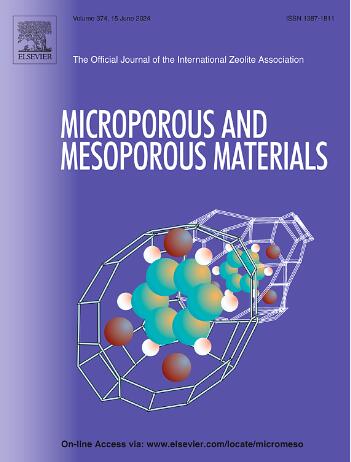Metal-organic frameworks: An overview of a possible solution for modern agriculture
IF 4.8
3区 材料科学
Q1 CHEMISTRY, APPLIED
引用次数: 0
Abstract
Metal-Organic Frameworks (MOFs) have emerged as promising materials for addressing modern agricultural challenges due to their exceptional porosity, high surface area, and chemical versatility. These crystalline frameworks enable the controlled release of agrochemicals, such as fertilizers, pesticides, and herbicides, improving resource efficiency and reducing environmental contamination. MOFs also exhibit multifunctionality, including water retention, pollutant remediation, and soil monitoring, offering solutions to issues like nutrient leaching, water scarcity, and pest resistance. ni Moreover, MOFs have been used as platform for biomolecules immobilization in the development of biosensors applied to agricultural area. Despite their transformative potential, challenges related to cost, scalability, and regulatory frameworks remain significant barriers to widespread adoption. This review explores the properties, applications, and limitations of MOFs in agriculture, emphasizing their role in advancing sustainable farming practices and highlighting perspectives for their integration into precision agriculture.

求助全文
约1分钟内获得全文
求助全文
来源期刊

Microporous and Mesoporous Materials
化学-材料科学:综合
CiteScore
10.70
自引率
5.80%
发文量
649
审稿时长
26 days
期刊介绍:
Microporous and Mesoporous Materials covers novel and significant aspects of porous solids classified as either microporous (pore size up to 2 nm) or mesoporous (pore size 2 to 50 nm). The porosity should have a specific impact on the material properties or application. Typical examples are zeolites and zeolite-like materials, pillared materials, clathrasils and clathrates, carbon molecular sieves, ordered mesoporous materials, organic/inorganic porous hybrid materials, or porous metal oxides. Both natural and synthetic porous materials are within the scope of the journal.
Topics which are particularly of interest include:
All aspects of natural microporous and mesoporous solids
The synthesis of crystalline or amorphous porous materials
The physico-chemical characterization of microporous and mesoporous solids, especially spectroscopic and microscopic
The modification of microporous and mesoporous solids, for example by ion exchange or solid-state reactions
All topics related to diffusion of mobile species in the pores of microporous and mesoporous materials
Adsorption (and other separation techniques) using microporous or mesoporous adsorbents
Catalysis by microporous and mesoporous materials
Host/guest interactions
Theoretical chemistry and modelling of host/guest interactions
All topics related to the application of microporous and mesoporous materials in industrial catalysis, separation technology, environmental protection, electrochemistry, membranes, sensors, optical devices, etc.
 求助内容:
求助内容: 应助结果提醒方式:
应助结果提醒方式:


